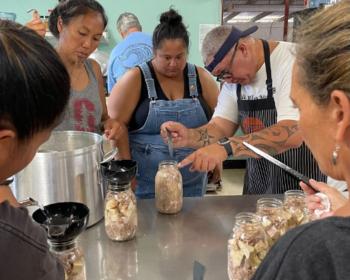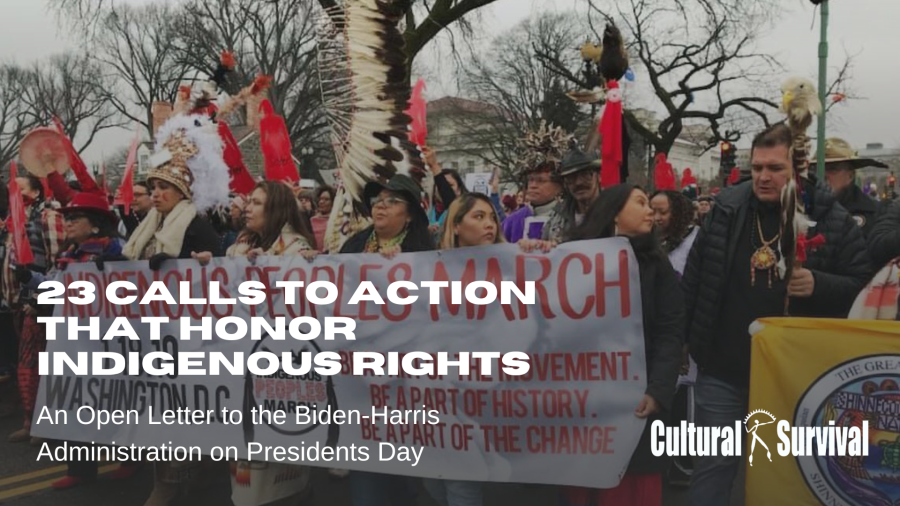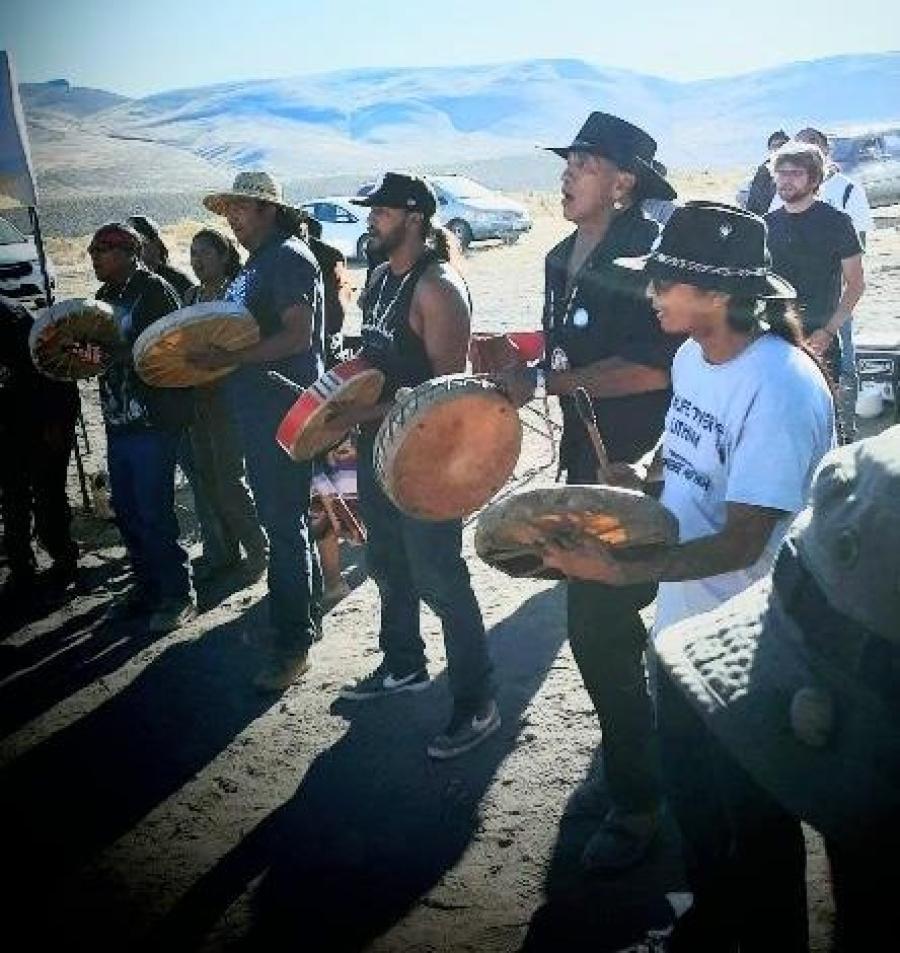Co-management in Alaska is driven by a number of social, political, and economic forces. Native rights proponents have succeeded in legally mandating comanagement and lawyers for Alaska Native corporations and organizations work to ensure that state and federal agencies respond accordingly Involving local Alaska Natives in decisions that affect their lives and livelihoods is also seen as the morally correct thing to do.
As well as responding to moral incentives and legal imperatives, resource managers may think that Alaska Natives may have valuable knowledge -- at least in scientific terms -- about the resources in question. This is a rather new conclusion for non-Native biologists who have generally been skeptical of oral histories and personal experiences rather than recorded observations and experiments.
At best, however, Native-held knowledge only tends to be accepted after it has been independently confirmed. For example, the Inupiat of Alaska's North Slope disputed the U.S. government's figure of 2,000 bowhead whales migrating along the north coast of Alaska, a figure obtained by marine biologists who counted whales passing near shore leads. The Inupiat maintained that the actual population was several times higher since additional whales migrate several miles offshore. Their contention was only accepted after biologists working for the Inupiat-controlled North Slope Borough placed an array of microphones in offshore migration paths and verified a bowhead population of over 8,000.
Co-Management and Regulatory Compliance
In addition to positively valuing some Native empirical contributions, agency representatives often support co-management as a way to increase regulatory compliance. In their experience, cooperative agreements are less likely to be ignored or resisted.
Historically, many Alaska Native hunters remained unaware of and uninterested in regulation. Living culturally and geographically remote from administrative centers, Alaska Natives viewed hunting regulations as foreign and irrelevant to their lives, just as hamburger-consuming Americans would view a law passed in India against killing and eating cattle.
In some cases, however, non-compliance has taken the form of active resistance by hunters. Hunters have shot holes in the floats of planes flown by enforcement agents. With compromised flotation that might prevent their take-off, agents would not risk landing to cite hunters. In one incident of mass civil disobedience by Alaska Natives, the Barrow Duck-In of 1964, Inupiat protested the arrest of several hunters (including the local state legislator) for out-of-season duck hunting. Over 100 Inupiat men and women, including many elders, presented themselves, dead eider ducks in hand, to be arrested. In the end, all charges were dropped. Even though the Barrow Duck-In occurred three decades ago, its political effectiveness is still mentioned by some Alaska Natives and it is likely to be remembered by wildlife regulators who now deal with land-owning Alaska Natives, politically empowered by the Alaska Native Claims Settlement Act.
In the crudest terms, the degree of inclusion is often judged by the numbers or percentages of Alaska Native participants in the process. Thus, a board or committee might be described as having half Alaska Native members. This is almost always based on recognized genetic ties. Actual cultural knowledge seems less important -- Natives, not `Nativeness,' are counted. Alternatively, inclusion may be judged by which Alaska Native user groups or representative bodies are involved in decisions: e.g., the Eskimo Whaling Commission, the Eskimo Walrus Commission, the Alaska Sea Otter Commission, or the Alaska Federation of Natives.
Some recognize that to be effective, co-management must include Native principles in its decisions. TEK (Traditional Environmental Knowledge), is now a hot topic for managers, anthropologists, and scientists from a variety of disciplines who hope to extract information like past climate data from someone's life history. But decontextualizing pieces of local knowledge and reincorporating them as information in scientific reports seriously misrepresents indigenous perspectives. And who is to judge whether Native principles have been incorporated? Whose viewpoint is to be accepted when there is a diversity of views? These are issues shaped in negotiations and filtered through the editorial choices of those who write and review reports.
Communications and Conflicting Cultural Perspectives
If we examine actual co-management meetings, different participants may use the same words, but with different meanings. This is only partially due to translation problems and the fact that words rarely connote the same things in two different (and in this case unrelated) languages. When Yup'ik Eskimos speak English, they may actually be glossing Yup'ik cultural concepts in English words. The term `wanton waste' legally refers to hunters or fishermen not salvaging edible parts of a carcass or allowing meat to spoil. Edibility is, however, culturally-determined. In the legal context, `edibility' specifically refers to those animals and animal parts that non-Natives typically eat. Therefore, Alaska Native groups have a more inclusive definition of edibility and hence, `wanton waste.'
Different interest groups also actively seek to give new, particularized meanings to key English words. Spoken by an environmentalist, `stewardship' refers to taking care of a resource and passing it down to future generations with minimal environmental damage. The same word spoken by an old style forester can include extensive clear cutting of timber, anathema to environmentalists. In this example, members of the two groups, despite ideological and social differences, share a common culture. They also share a scientific perspective, both framing many of their arguments in empirical terms. Because of these common factors (and because interactions between foresters and environmentalists have been so contentious and politicized) members of these groups are likely to realize that they mean different things with the same words.
Without this common cultural and academic history, participants do not always recognize their miscommunication. For example, to biologists, conservation involves harvest practices, including restraint, that will ensure viable future stocks based upon reasonable assumptions about reproduction and growth. Yup'ik communities are aware that human actions affect animal populations. To them, wasting and other improper behavior cause animals to consciously withhold themselves from hunters. The human-animal relationship has been understood as social and reciprocal. In theory, the more one harvests, the more there would be in the future as long as the animals were not wasted or treated in other disrespectful ways. (Biologists are often appalled at the license to over-harvest this would seem to give. In fact, other beliefs, social practices, and technological constraints mitigated population decimation.) Conservation, for biologists, concerns population numbers and future reproduction. For traditional Yupiit, it concerns proper human behavior. Wanton waste has moral and spiritual dimensions to Yupiit, while regulatory agencies are more concerned with the legal and economic repercussions of wasting resources.
These beliefs remain important for many Yupiit though they may not be enunciated this explicitly Traditional perspectives typically underlie the positions of respected elders involved in co-management. Younger Yupiit may represent a wider spectrum of beliefs and use a variety of strategies to argue their positions, but still tend to trust local knowledge and be skeptical of scientific studies and research practices.
Co-Management Problems: A Commercial Salmon Fishing Case
Not only may participants in co-management meetings attach different meanings to particular words and value scientific and local knowledge differently, but they often see their responsibilities differently Evidence comes from our work with field notes, tapes, and transcripts of the Kuskokwim River Salmon Management Working Group. This group, a co-management forum intended to bring together commercial and subsistence fishermen, processors, and managers at the negotiating table, met two to three times weekly to set commercial salmon fishing openings. The meeting of July 8th, 1991 was particularly contentious.
Biologists contended that, based on their counts, fish numbers were too low to permit the commercial fisheries to open. Yup'ik fishermen, whose income is derived from commercial fish sales, contended that there was no shortage and that this would be corroborated by their catch -- if they were allowed to open for commercial fishing. Yup'ik elders testified that the fish were coming, but had not yet arrived in quantity for various reasons. Non-Native processors also had a clear economic interest in opening the fishery since their livelihood depended on buying commercially-caught fish. Other non-Native board members concurred with the resource management biologists who wanted to wait until fish counts increased before they would allow commercial fishing to open. These differences, however, did not simply reflect a conflict between economic and conservationist concerns.
Discourse analysis made it clear to us that the power of words was one important issue for the Yupiit. Elders were concerned that any public announcement not state that there were no fish available; "We shouldn't close this fishery. Just say that through your study that the fish aren't passing through." Implicitly stating that there were no fish could worsen the situation. The words could become actualized simply by being stated. Also, since fish withhold themselves from humans who behave improperly, the statement could be tantamount to an admission of grave moral failings. However, neither of these concerns were openly articulated and they remained hidden sources of dissension. Some non-Natives, frustrated by what seemed to them denial of the facts, wanted to take a clearly articulated stand: "Everybody that comes to this table [has]...got to make a decision that there's not enough fish, because one of the things that we have to decide here is when there's not enough fish. I've made that decision right now...that I think we've got to get more fish in the river before we fish again." Unrecognized cross-cultural misunderstandings can add tension to an already sensitive situation.
The negotiations were further complicated by concern that the shortage of fish on the Kuskokwim River was due to interception. The Working Group is allowed to regulate only that part of the Kuskokwim bound salmon run that survives through the False Pass intercept fishery. In some years, the False Pass catch may be greater than the in-river catch. This severely limits what fish the Working Group has to manage. The Alaska Commissioner of Fish and Game was present to speak to the Working Group about this issue. Communicative strategies seemed again to divide along ethnic lines. Yupiit appealed to the commissioner to use his power appropriately and help the "little people."
Their appeal was couched in terms that were relatively opaque to those unfamiliar with Yup'ik discourse patterns. Non-Natives were more confrontational and in one case, a non-Native seemed to use his own hard stand on closing the local fishery as a challenge to the commissioner to take an equally hard stand in closing down the intercept fishery. In the end, the commissioner promised to informally investigate the actions taken by ADF&G employees managing the intercept fishery. Otherwise, he promised nothing. He never seemed to understand that Yupiit wanted him to act in a way that they conceived as appropriate to his role.
Co-management attempts to rectify the disenfranchisement and non-compliance of Alaska Natives. Both terms express an inherent power inequality Those with power can choose to enfranchise those without. Those with power make the rules and seek new ways to get others to comply.
Co-Management and Co-Optation
We can think of resource management situations affecting Native people as existing on a continuum, from virtually complete control by non-Native managers as in some National Parks, to one where Natives have virtually complete control, as in some `lower 48' reservations. In Alaska, situations almost always involve some degree of cooperation, but state and federal agencies retain the bulk of the power. In the case of our fish Working Group example, the ADF&G representative had absolute veto power over any decision to harvest fish. If this were fully cooperative management, then the representative's veto would be limited. At the same time, sharing power would require sharing liability As it stands, government agencies are disproportionately subject to lawsuits over management decisions. This liability gives management agencies a strong incentive to retain control, but making Alaska Native volunteers equally liable to lawsuits seems an unpalatable solution. It should at least be possible to reduce other factors that unnecessarily amplify the power inequality.
If TEK and Alaska Natives are both included in co-management, reports are generally sanguine. But we argue that inclusion requires more than head counts. As we have seen, there are a variety of problems with typical co-management settings, including miscommunication and misunderstanding on a variety of levels. There is evidence, however, from the Western Alaska Brown Bear Management Area Working Group that co-management can occur under better conditions. In this case, Yup'ik participants objected to the drugging, capture, and collaring of bears for a population study, seeing these actions as disrespectful and spiritually dangerous. At the initial meeting, state and federal game managers uncompromisingly presented their ongoing research plans; the bear Working Group vetoed those plans, though they were unable to stop the research. (The study was eventually stopped by outside political pressure.)
Three years later, when biologists more humbly presented a request to replace the batteries in the bear collars, permission was eventually granted allowing them to continue their research. An employee of that regional Native non-profit corporation said that the group might have acquiesced to the earlier request, had it not been presented as an ultimatum.
In this setting, the Alaska Natives involved had more power than they did in salmon co-management -- not enough to stop research, but enough to limit future research, especially after the situation became politicized. It helped that the Yup'ik language was used freely and that ideological issues were more openly expressed than in the fish Working Group. Also, because Natives had more control, agency personnel realized that they needed to approach the situation more cooperatively.
This leads us to an unsurprising conclusion. In order for co-management to work, power must really be shared. An openness to Native language use and a respectful accommodation of Native ideology are central to that sharing.
Selected Reading
Cruikshank, Julie. 1998. The Social Life of Stories: Narrative and Knowledge in the Yukon Territory. Lincoln: University of Nebraska Press.
Hensel, Chase. 1996. Telling Our Selves: Ethnicity and Discourse in Southwestern Alaska. New York: Oxford University Press.
Morrow, Phyllis and Chase Hensel. 1992. "Hidden Dissensions: Minority-Majority Relationships and the Use of Contested Terminology." Arctic Anthropology. 29(1): 38-53.
Fienup-Riordan, Ann. 1990. Eskimo Essays: Yup'ik Lives and How We Se Them (see especially Chapter 8, "Original Ecologists?: The Relationship Between Yup'ik Eskimos and Animals"). New Brunswick: Rutgers University Press.
Article copyright Cultural Survival, Inc.



